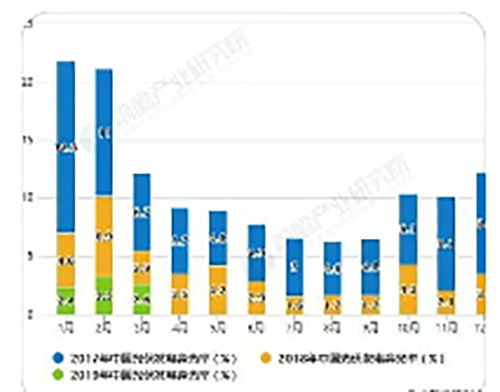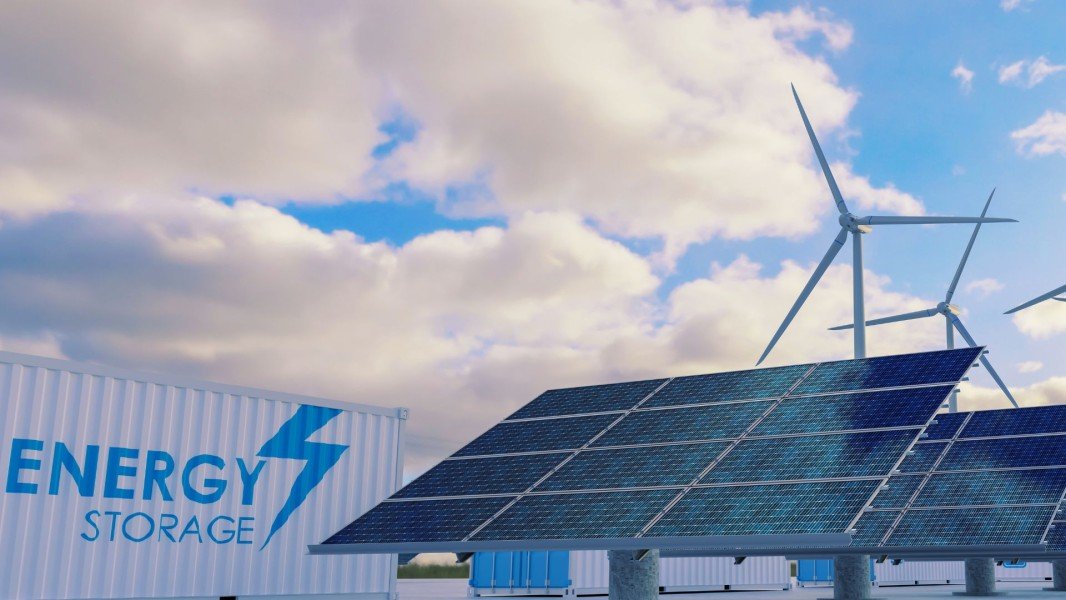The ground application of photovoltaic power generation in China has been nearly 30 years since it was first used for the navigation beacon in Tianjin Port in 1973, and the photovoltaic power generation technology and market in China have developed greatly in the past 28 years. In terms of application forms, there are photovoltaic decentralized household power generation system, centralized village power supply system, hybrid or complementary power generation system, grid connected power generation system, commercial solar power supply, etc. At present, the relatively mature markets in China include the communication field, some industrial fields, rural electrification in remote areas and some commercial power supplies. By the end of 2000, the annual output of solar cells in China had reached 3MWp, with a cumulative consumption of 19MWp. There will be great development in the next 10 years. It is estimated that by 2010, the annual output of solar cells in China will reach 30 MWp, and the cumulative consumption will exceed 200 MWp. The potential market of photovoltaic power generation includes roof grid connected power generation system, large hybrid power generation system, electric vehicle charging system, solar photovoltaic hydrogen generation system and some special commercial power supplies. The development of potential markets requires not only corresponding technologies, but also corresponding policy support. There is a big gap between China and foreign countries in terms of technology and policy of photovoltaic power generation. If we do not pay attention to it, China’s photovoltaic development will inevitably suffer setbacks. The report analyzes the technological development and market prospects of photovoltaic power generation, as well as the technological gap and policy gap.
1. Preface
Since the 1970s, due to the impact of two oil crises, photovoltaic power generation has been highly valued worldwide and has developed rapidly. In the long term, photovoltaic power generation will enter the power market with decentralized power supply and partially replace conventional energy; In the near future, photovoltaic power generation can be used as a supplement to conventional energy, and it is of great significance in terms of environmental protection and energy strategy to solve the power demand of special applications, such as communication, signal power supply, and civil life in remote areas without power. At present, there are no fewer than hundreds of solar cell production plants in the world, and 1 million sets of photovoltaic systems are in operation. In 2000, the world’s solar cell production reached 287.7MW, and the cumulative installed capacity has exceeded 1300MW. It is estimated that by 2030, photovoltaic power generation will account for 5 to 20 percent of the world’s total power generation. Photovoltaic power generation has been proved to be technically mature and economically cost-effective in many application fields. The analysis shows that when the ratio of the effective system power to the transmission distance of the current photovoltaic power station is less than 100 W/km, it is more economical to build a photovoltaic power station than the conventional power grid to extend the power supply. Therefore, solar power generation is an important way to solve the problem of power supply in remote areas and special areas in China. China is a developing country with a vast territory, many remote provinces and economically underdeveloped areas. According to statistics, there are still about 9 million households and 28 million people without access to electricity, and 60 counties with electricity are seriously short of electricity. Farmers and herdsmen in these areas live scattered, far away from the power grid, and their power consumption level is very low (the average annual power consumption per capita is only 120 kWh). It is impossible to rely on conventional power to solve their power consumption problem in 10 years or even 20 years. Photovoltaic power generation is an ideal way to solve the problem of decentralized power consumption for farmers and herdsmen, and the market potential is huge.

Photovoltaic power generation has many advantages, such as: safe, reliable, noiseless, pollution-free, energy is available everywhere, no geographical restrictions, no fuel consumption, no mechanical rotating parts, low failure rate, simple maintenance, unattended, short construction period, random size, no need to set up transmission lines, convenient combination with buildings, etc. These advantages are beyond those of conventional power generation and other power generation methods.
2. Development of photovoltaic power generation market and supporting technologies
2.1 Progress of photovoltaic power generation market
After the development of solar cells, the first thing is to serve the space power supply, which is very expensive. In order to promote the application of solar cells on the ground, market demand alone is not enough. Therefore, since the 1970s, governments of all countries have invested a lot in supporting the development of solar cells. In 1973, the United States first formulated the government’s photovoltaic power generation development plan, which defined the short-term, medium-term and long-term development strategic objectives; Japan began to implement the “Sunshine Plan” in 1974, invested 500 million US dollars, and rapidly developed into a major producer of solar cells in the world. Since the 1980s, other developed countries, such as Germany, Britain, France, Italy, Spain, Switzerland and Finland, have also formulated photovoltaic development plans, and invested a lot of money in technology development and accelerated industrialization. Since the late 1980s, western developed countries have formulated policies to encourage and support grid connected photovoltaic power generation from the perspective of sustainable development of environment and energy. The United States began to implement the PVUSA plan in 1988 to establish a centralized photovoltaic grid connected power generation system (1MWp-10MWp); Implementation of PVBONUS plan combined with roof in 1995; In 1997, the US announced the plan of one million solar roofs. The total PV installation will reach 3025 MWp, and the PV power price will be reduced from 20 cents to 6 cents; In 1990, Germany proposed the 1000 roof power generation plan, and the electricity generated was purchased by the power sector. In 1998, the 100000 roof plan was further proposed. The PV grid price in 1999 was 0.99 marks per kilowatt hour, which greatly stimulated the PV market in Germany and even the world; Following the “Sunshine Plan”, Japan proposed the Asahi Seven Year Plan in 1994. It planned to promote 162000 sets of solar photovoltaic roofs by 2000, announced the 70000 photovoltaic roof plan in 1997, and installed 7600MWp solar cells by 2010. In addition, Italy, India, Switzerland, the Netherlands and Spain have similar plans. In terms of the world, photovoltaic power generation has completed the initial development and demonstration stage, and is now moving towards mass production and large-scale application. From the earliest development as a small power source to the current grid connected power generation as a public power, its application scope has also spread to almost all power consumption fields.
China began to study solar cells in 1958 and successfully applied them to the Dongfanghong 2 satellite launched by China for the first time in 1971. In 1973, solar cells were used on the ground. China’s photovoltaic industry was still in its infancy before the 1980s. The annual output of solar cells has been hovering below 10KW, and the price is also very expensive. Due to the limitation of price and output, the development of the market is very slow. In addition to being used as satellite power, solar cells on the ground are only used for low-power power supply systems. In Beijing 2001, such as beacon lights, railway signal systems, instrument power for alpine weather stations, electric fences, black light lamps, DC fluorescent lamps, etc., the power is generally between a few watts and dozens of watts. During the “Sixth Five Year Plan” (1981-1985) and the “Seventh Five Year Plan” (1986-1990), the state began to support the development of the photovoltaic industry and the photovoltaic market. The central and local governments have invested certain funds in the photovoltaic field, which has consolidated China’s very weak solar cell industry and established demonstrations in many application fields, such as microwave relay stations, military communication systems, cathodic protection systems for water gates and oil pipelines Rural carrier telephone system, small household system and village power supply system. At the same time, during the “Seventh Five Year Plan” period, China has successively introduced several solar cell production lines from abroad. In addition to a 1MW amorphous silicon cell production line, the rest are all single crystal silicon cell production lines, which makes the production capacity of solar cells in China soar to 4.5MWp/year, and the price drops from 80 yuan/Wp at the beginning of the “Seventh Five Year Plan” to about 40 yuan/Wp, which has played a positive role in promoting the development of the photovoltaic market. Solar cells are no longer only used for small power supply systems, but are widely used in communication, transportation, petroleum, rural electrification, civil products and other fields. Photovoltaic power generation is not only included in the national key research plan, but also included in the national power construction plan. At the same time, it is also used in some major projects, such as the “Bright Project” of the National Planning Commission, the construction plan of Tibet’s electricity free county of the Ministry of Electric Power Tibet Ali Optoelectronic Plan, the forest fire prevention communication project of the Ministry of Forestry, the optical cable project of the Ministry of Posts and Telecommunications, the pipeline cathodic protection project of the Ministry of Petroleum, and the village to village connection project of the Ministry of Radio, Film and Television. In 2000, the annual output of solar cells in China has reached 3MWp, and the cumulative consumption has exceeded 15MWp.

2.2 Technical status and progress of photovoltaic supporting products
Through the Seventh Five Year Plan The Eighth Five Year Plan and the Ninth Five Year Plan “It is planned that China has made progress in tackling key problems in photovoltaic water pumps, independent operation inverters, grid connected inverters, communication controllers, special measuring equipment for photovoltaic systems and other components, and has gained some experience in the development of photovoltaic power plants, wind solar complementary power plants, photovoltaic household systems and grid connected power generation systems. At the same time, China has also made some progress in the serialization, modularization, standardization, intelligence and industrial production of products. In addition to solar cells and batteries, other specialized manufacturers have also been established, such as inverters, controllers, DC lamps, etc.






